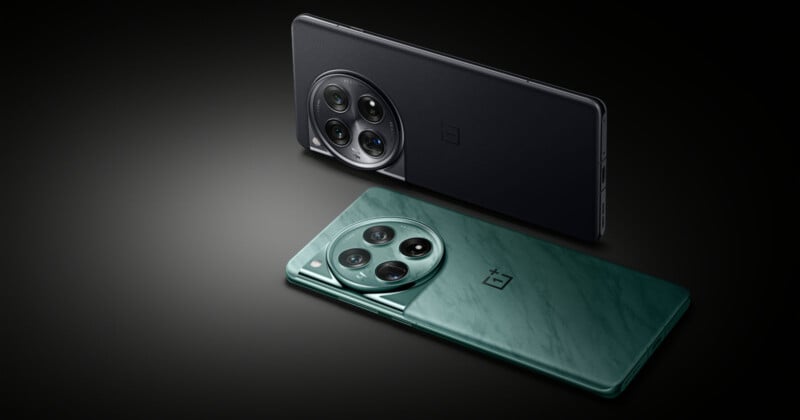
![]()
OnePlus is celebrating its 10th anniversary in style by launching its latest flagship smartphone, the OnePlus 12. The new handheld boasts the Snapdragon 8 Gen 3 mobile platform, the 4th generation Hasselblad Camera for Mobile, a new display, and a beautiful design, among other novel features and improvements.
“As we celebrate the tenth anniversary of OnePlus with our loyal users worldwide, we are thrilled to introduce the OnePlus 12 — an all-round flagship phone that embodies our decade-long leadership in technology,” says Pete Lau, Founder of OnePlus. “With our ‘Never Settle’ mantra, OnePlus is dedicated to bringing innovative ideas to life and disrupting the mobile industry. With the OnePlus 12, we created a true masterpiece, combining advanced technologies from OnePlus and our partners to amaze the market and challenge the status quo.”

One Plus 12 Camera Features: Hasselblad Camera for Mobile
The OnePlus 12 sports an industry-first customized Sony LYT-808 wide-angle (main) camera with a Type 1/1.4-inch image sensor. Per Chinese teasers last year, the new sensor was co-developed between Sony Semiconductor and OnePlus. This is not the first time OnePlus has used a Sony LYT-808 family imager in a smartphone, as the OnePlus Open featured a similar sensor. However, shrewd observers will note that the Open has a LYT-T808 sensor, which is a variation of the sensor designed to be thinner, enabling the Open’s remarkable design.
The OnePlus 12 is, of course, not foldable, so there is more space for a more traditional pixel-stacked sensor design. The sensor absorbs 50% more light than the Sony IMX890 featured in the OnePlus 11, a solid-performing smartphone.

Alongside the new image sensor, OnePlus has incorporated an ALC Coating IR filter to reduce red glare and artifacts, improving overall image quality in various lighting conditions.
The 50-megapixel main camera has a bright f/1.6 aperture and 23mm equivalent focal length. This camera also includes optical image stabilization.
This 50MP primary camera is flanked by a 64-megapixel 3x periscope telephoto camera like the one introduced in the OnePlus Open. The 12 is the first OnePlus single-screen phone to include this camera. It has a Type 1/2 OV64B image sensor, 70mm equivalent focal length, and optical image stabilization. The telephoto camera can also use an in-sensor crop to deliver 6x zoom and, if quality compromises are acceptable, digitally zoom to 120x. While a bit smaller than the LYT-808 sensor in the main camera, this new 3x zoom is 76% larger than the IMX709 OnePlus used in the OnePlus 11.
Rounding out the trio of rear cameras is the 114-degree ultra-wide camera. The 48-megapixel camera has a 16mm equivalent focal length and can focus as close as 3.5 centimeters (1.38 inches).
Alongside the camera hardware, OnePlus has made significant strides in software. The OnePlus 12 features the latest HDR algorithm, an upgraded Portrait Mode that simulates bokeh and flare effects from legendary Hasselblad lenses, and improved image processing algorithms developed in collaboration with Hasselblad.
Alongside the Hasselblad Portrait Mode, there is also a new Hasselblad Master Mode, which provides direct access to tint, sharpness, contrast, vignette, and saturation before even pressing the shutter.
![]()
OnePlus 12 Promises Powerful Performance
At the heart of the OnePlus 12 is Qualcomm’s latest Snapdragon 8 Gen 3 mobile platform. This chip promises up to 30% improved CPU performance and a 25% improvement in GPU performance.
“Empowered by the proprietary Trinity Engine and equipped with up to 16GB of LPDDR5X RAM and 512GB of UFS 4.0 ROM, the OnePlus 12 can keep applications readily available in the background for 72 hours,” OnePlus promises.
The OnePlus 12 also introduces an “industry-leading” Dual Cryo-velocity VC Cooling System featuring a 3D capillary dissipation structure with the largest cooling surface area of 9,140 square millimeters. OnePlus promises that the larger VC accelerates the cooling process, ensuring better and more stable performance during intensive tasks like gaming and video editing, and fast charging.
Speaking of fast charging, the OnePlus 12 supports 80W fast charging to its large 5,400mAh battery. With its 80W SUPERVOOC Endurance Edition tech, the 12 can charge from one to 100% in 30 minutes. The phone also supports the long-awaited 50W AIRVOOC wireless charging. The lack of wireless charging on the OnePlus 11 and Open has clearly been noted by OnePlus.

New Bright Display and Improved Audio
The OnePlus 12 sports a new 2K 120Hz ProXDR display powered by BOE’s new blue diamond pixel layout. The OnePlus 12 can reach a peak brightness of 4,500 nits, the brightest-ever screen on a smartphone. This setting is not user-accessible, however, and is something automatically enabled when ambient lighting conditions demand a super-bright screen.
The display has a variable refresh rate ranging from 1Hz to 120Hz and is certified by DisplayMate with an A+ rating. The OnePlus 12 uses the company’s proprietary display engine and first-generation Display P1 chip to deliver bright, colorful, and sharp images without using excessive battery life.
Good video is best enjoyed alongside strong audio performance. The OnePlus 12 has dual stereo speakers with Dolby Atmos to create what OnePlus calls “3D sound spaces.”
![]()
Pricing and Availability
The OnePlus 12 comes in two colorways, Flowy Emerald and Silky Black. The green Flowy Emerald is inspired by the braided Dart River in New Zealand, “where emerald ribbons pulsate with vibrant energy,” says OnePlus. In person, it really is beautiful.
The OnePlus 12 will go on sale in the United States and Canada on February 6, starting at $800 ($1,070 CAD) for the 12GB RAM/256GB ROM version which only comes in Silky Black. The 16GB RAM/512GB ROM device, also available in Flowy Emerald, is $900 ($1,200 CAD).
Like OnePlus did with the OnePlus Open, it is offering a trade-in offer for the 12. If a customer trades in an existing device toward the OnePlus 12 through OnePlus.com, they can receive an additional $100 trade-in bonus on any phone in any condition.
Image credits: OnePlus






